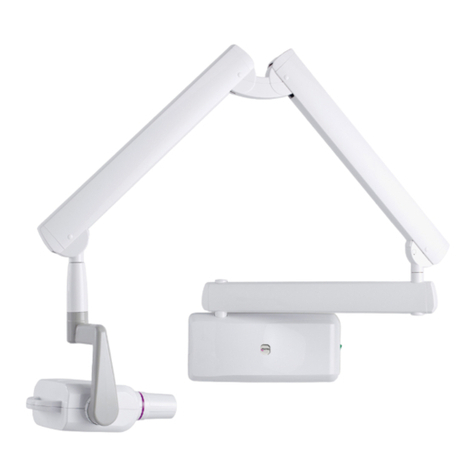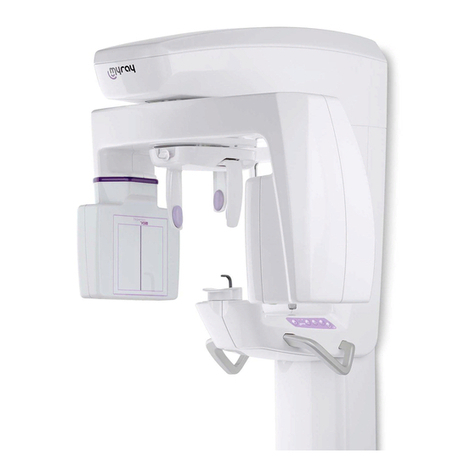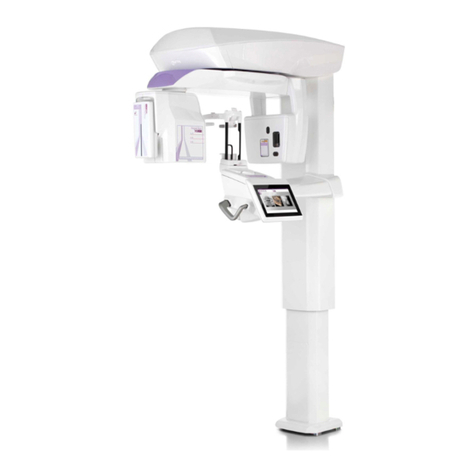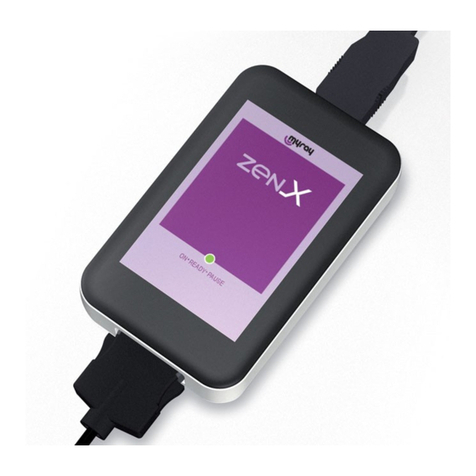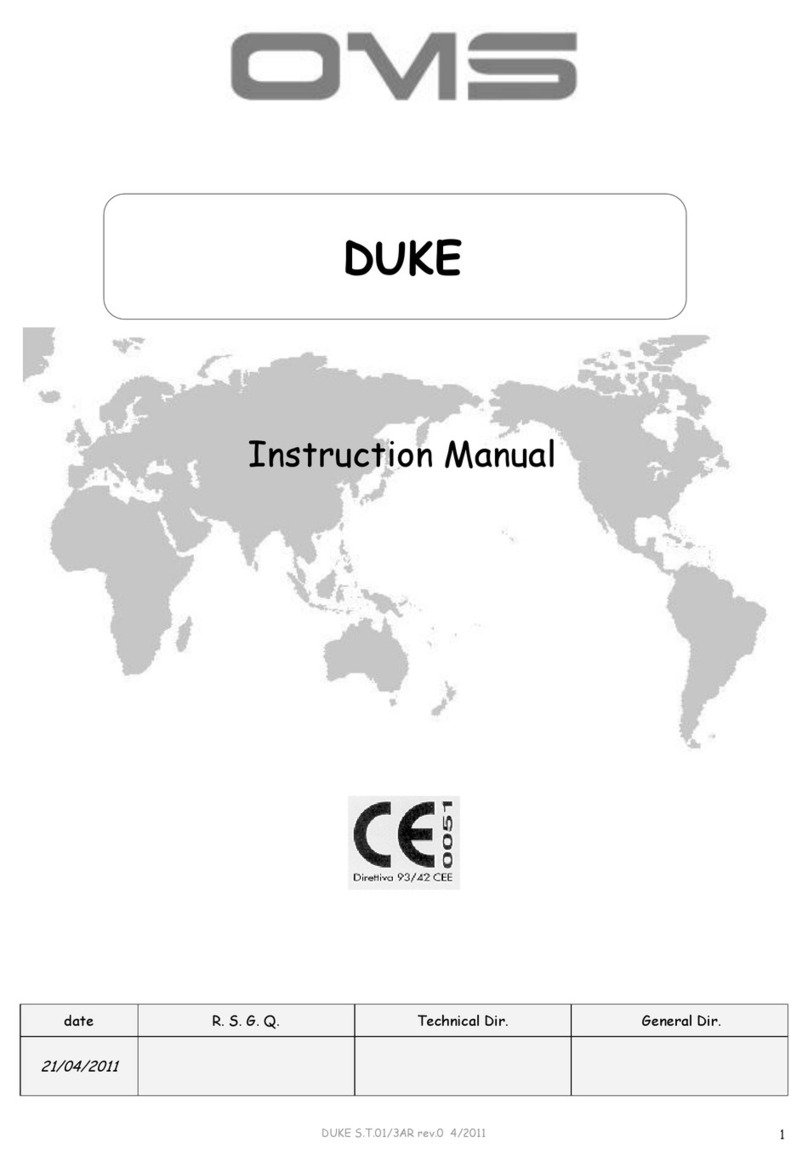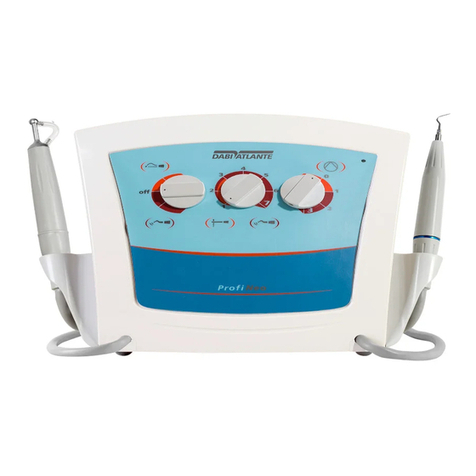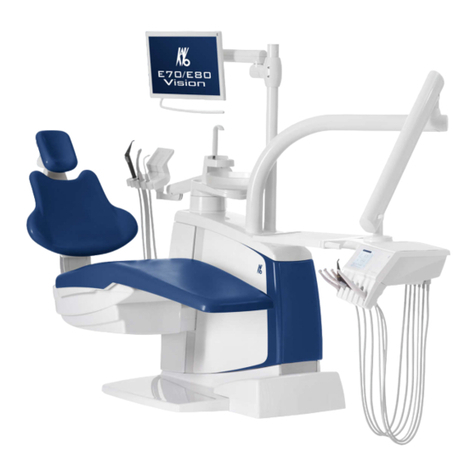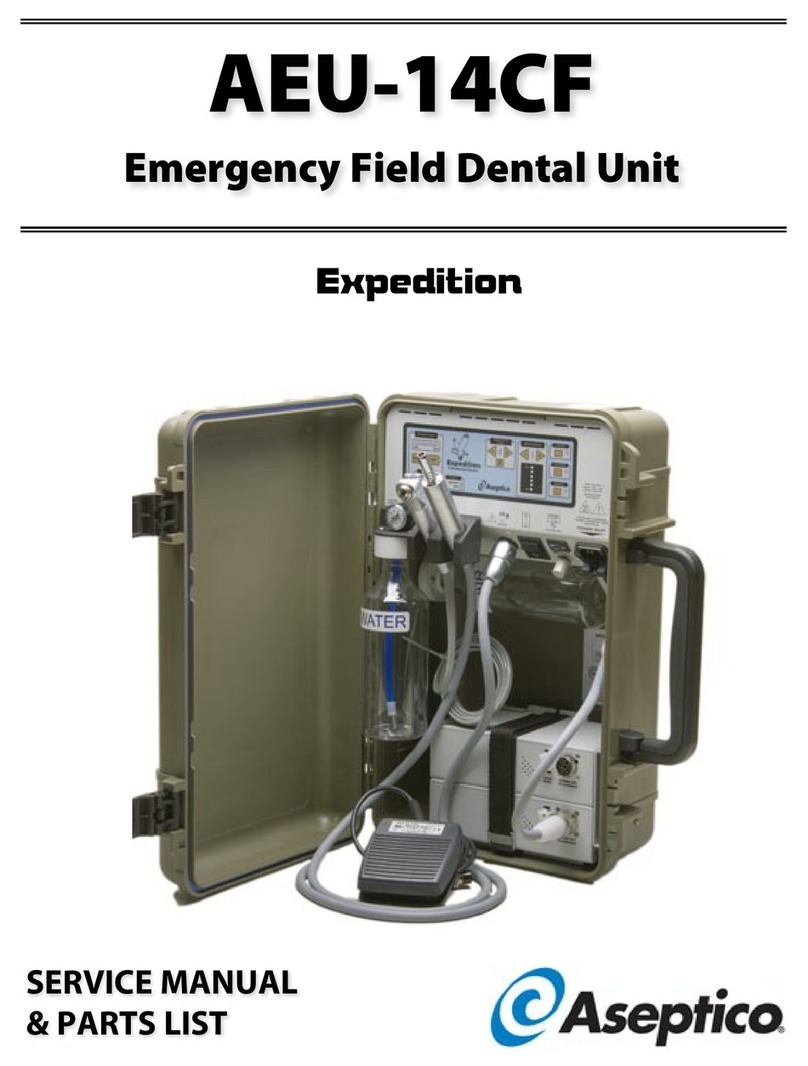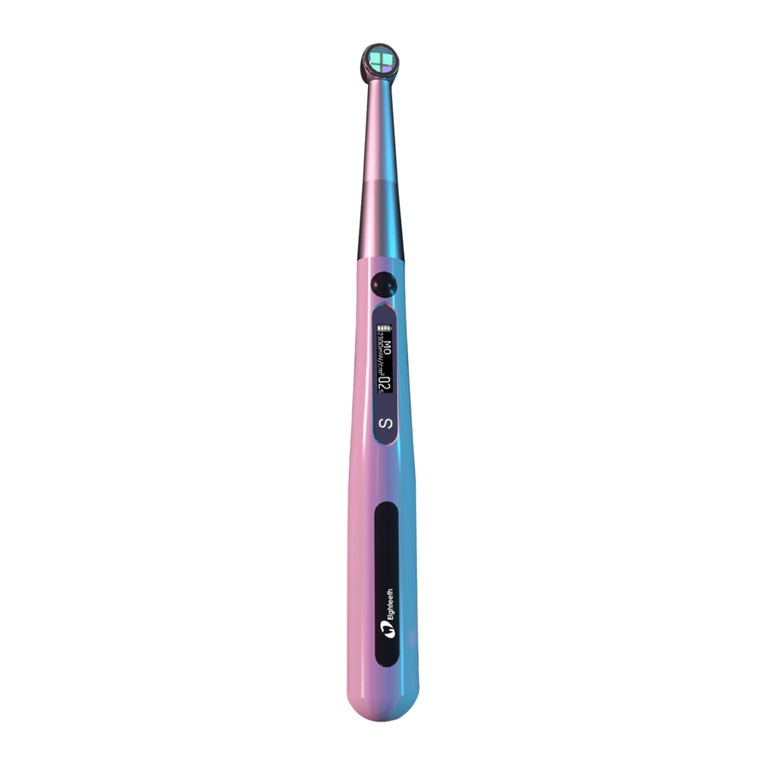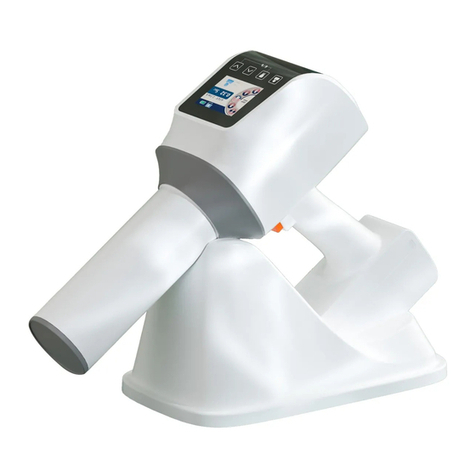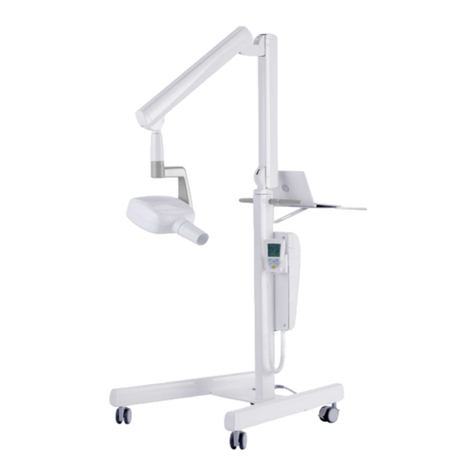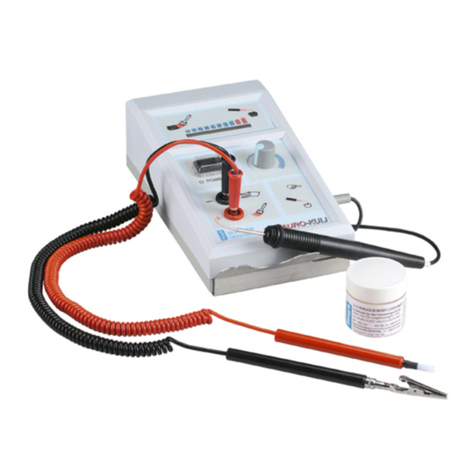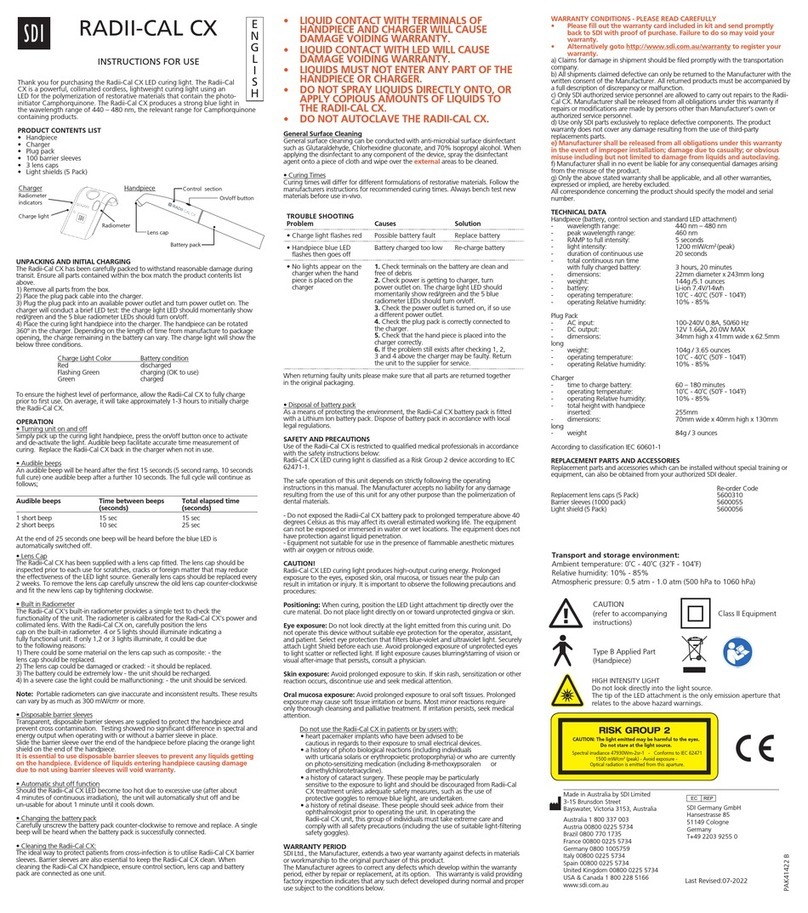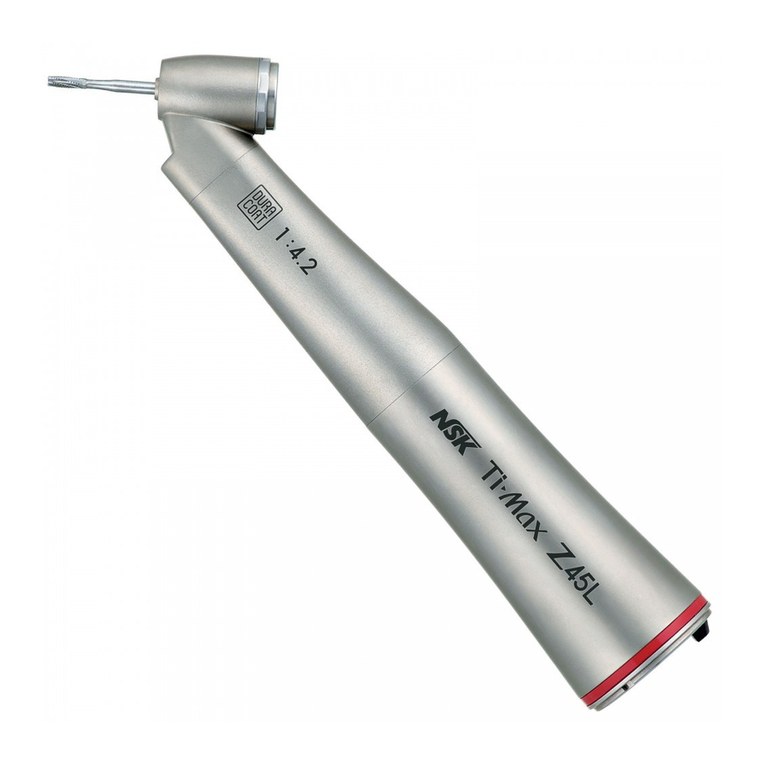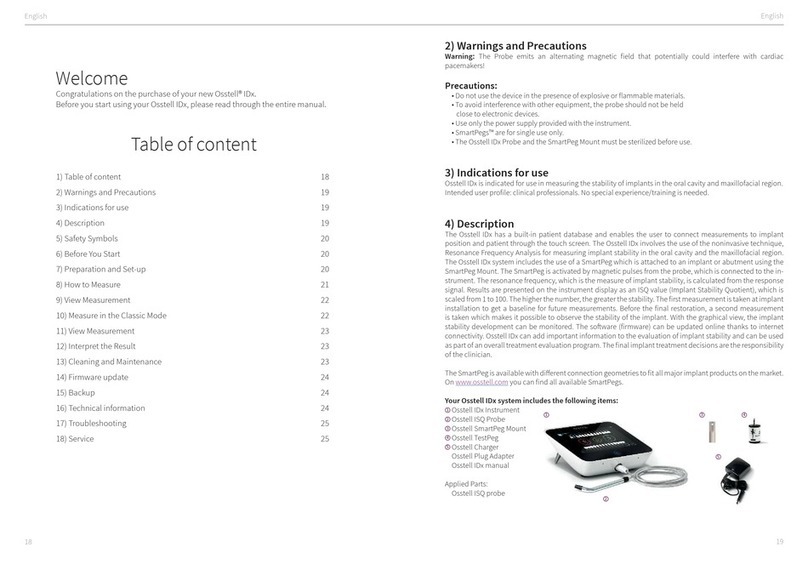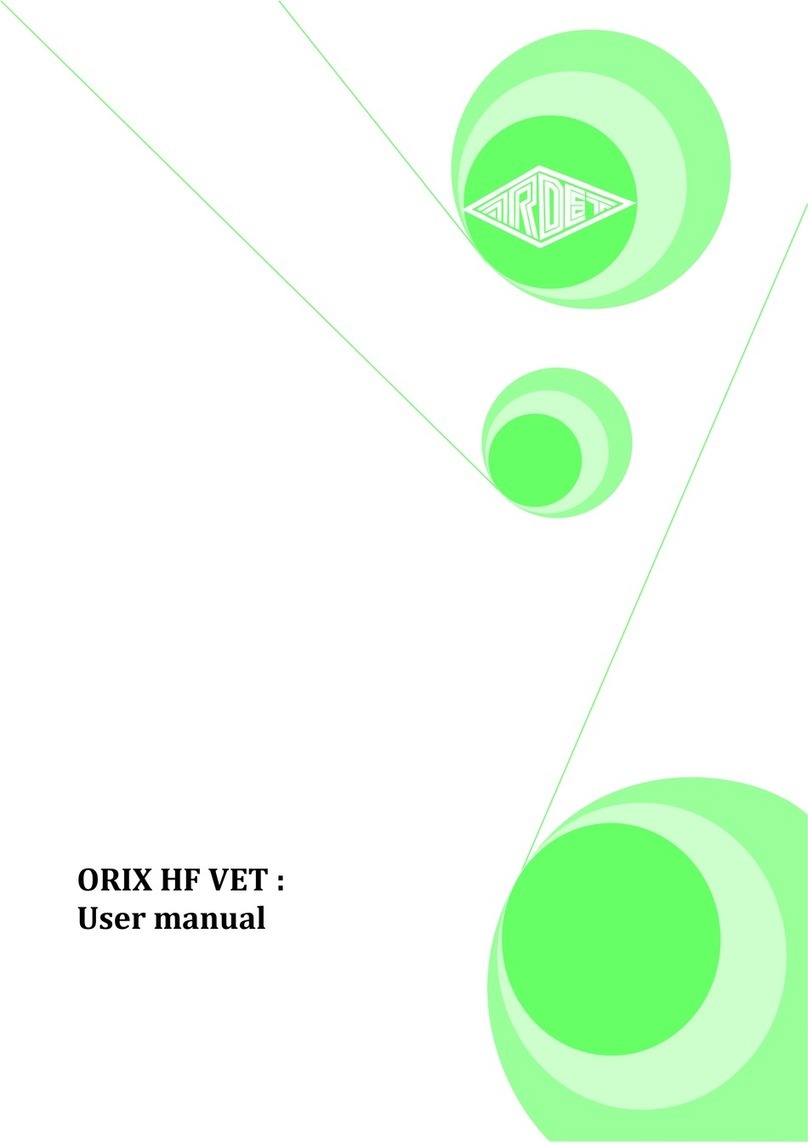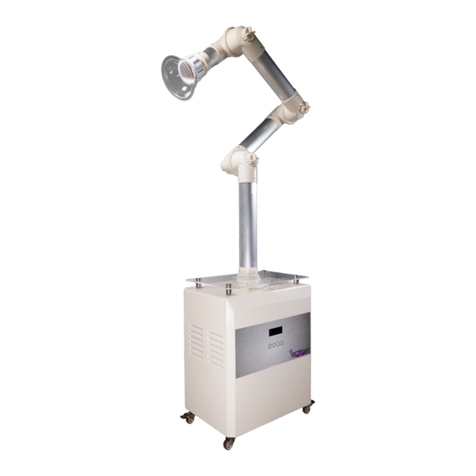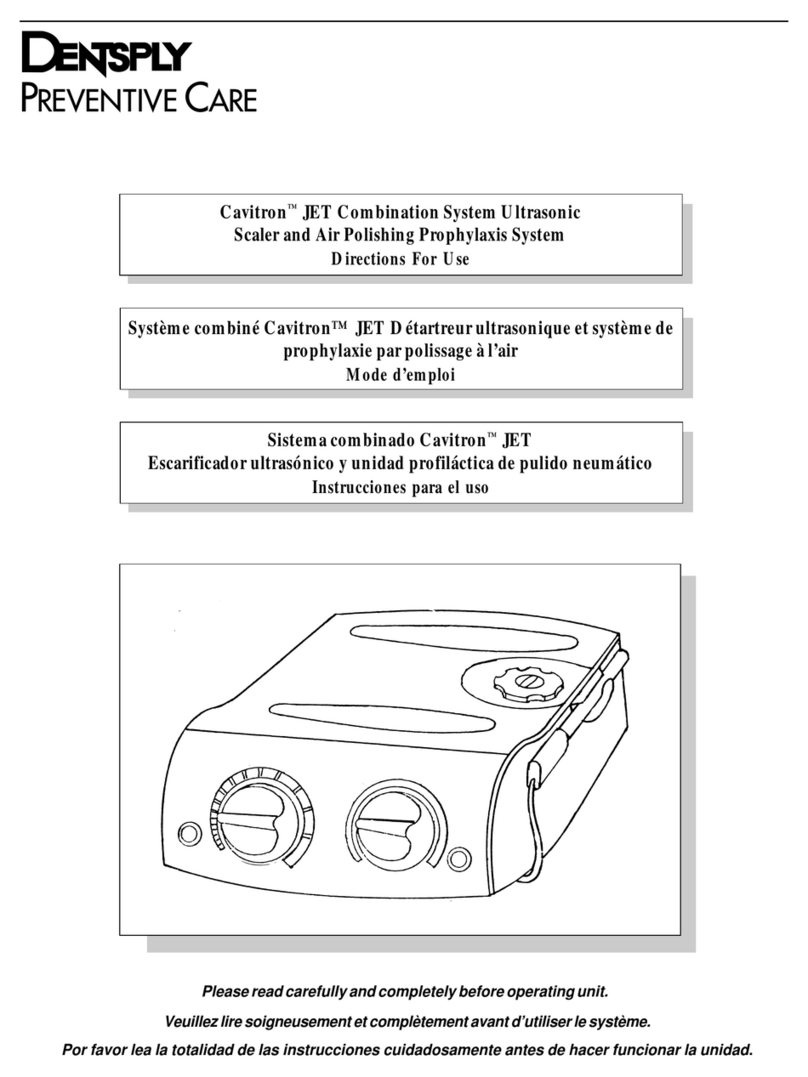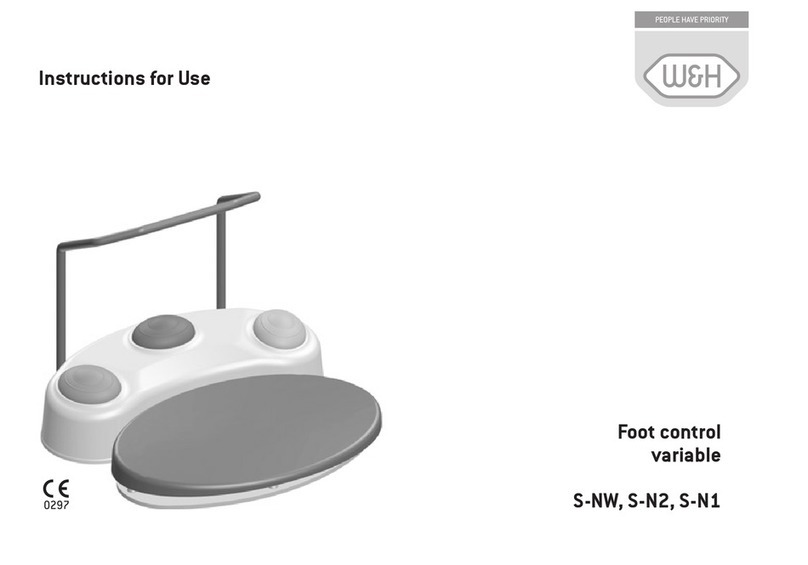Myray hyperion X9 User manual

97050543
Rev. 15
16.09
IT
FR
DE
ES
PT
RU
TR
ZH
NO
SV
FI
DA
PL
CS
HU
EN
RO
UK

2
OPERATOR'S MANUAL
EN
ITALIANO

EN
OPERATOR'S MANUAL
3
Contents
1. INTRODUCTION AND INDICATIONS FOR USE .....................................................................................................5
1.1. DESCRIPTION OF THE MANUAL.......................................................................................................................6
1.2. GENERAL WARNINGS........................................................................................................................................6
1.3. REQUIREMENTS (NOT PROVIDED WITH THE PRODUCT) ............................................................................7
1.4. STANDARDS AND REGULATIONS ....................................................................................................................7
1.5. CLASSIFICATIONS..............................................................................................................................................7
1.6. STYLISTIC CONVENTIONS ................................................................................................................................7
1.7. GENERAL SAFETY WARNINGS.........................................................................................................................8
1.7.1. INSTALLATION CONDITIONS .....................................................................................................................9
1.7.2. CONDITIONS OF USE .................................................................................................................................9
1.7.3. WARRANTY................................................................................................................................................10
1.7.4. MAINTENANCE AND DISPOSAL ..............................................................................................................10
1.7.5. CLEANING AND DISINFECTION...............................................................................................................11
1.7.6. HYGIENE PROCEDURES FOR PATIENT PROTECTION ........................................................................12
1.8. SAFETY WARNINGS.........................................................................................................................................12
1.8.1. CONDITIONS OF USE ...............................................................................................................................12
1.8.2. GENERAL SAFETY ....................................................................................................................................12
1.8.3. SAFETY DURING X-RAY DEVICE MOVEMENTS ....................................................................................13
1.8.4. EMERGENCY BUTTON .............................................................................................................................13
1.8.5. CONDENSATE FORMATION.....................................................................................................................14
1.8.6. ELECTROSTATIC DISCHARGE ................................................................................................................14
1.8.7. EXPOSURE TO LASER RADIATION.........................................................................................................14
1.8.8. ELECTROMAGNETIC SAFETY .................................................................................................................14
1.8.9. PROTECTION AGAINST RADIATION .......................................................................................................16
1.8.10. APPLIED PARTS...................................................................................................................................16
1.8.11. LEAKED RADIATIONS..........................................................................................................................17
2. DESCRIPTION OF OPERATION............................................................................................................................18
3. COMPONENTS .......................................................................................................................................................19
4. CONTROL PANEL ..................................................................................................................................................20
4.1. CONSOLE ONBOARD THE MACHINE.............................................................................................................20
4.2. PUSHBUTTON PANEL ON TELE-X-RAY ARM ................................................................................................20
4.3. X-RAY EMISSION REMOTE CONTROL...........................................................................................................21
4.4. PERFORM A SIMULATION (DUMMY RUN) .....................................................................................................21
5. PERFORMING A 2D X-RAY EXAMINATION .........................................................................................................22
5.1. STARTING THE SYSTEM .................................................................................................................................22
5.2. SELECTING THE EXAMINATION FROM THE CONTROL CONSOLE............................................................22
5.2.1. 2D EXAMINATIONS AVAILABLE ...............................................................................................................22
5.2.2. SELECTING AN EXAMINATION ................................................................................................................25
5.2.3. SETTING AN EXAMINATION FOR CHILDREN.........................................................................................26
5.2.4. SETTING A CURRENT EXAMINATION AS FAVOURITE .........................................................................26
5.2.5. SETTING THE PROJECTION TYPE..........................................................................................................27
5.2.6. SELECTING A REDUCED ANATOMIC REGION ......................................................................................28
5.2.7. CONFIGURATION OF THE X-RAY TECHNIQUE FACTORS ...................................................................29
5.3. PREPARATION OF THE X-RAY EXAMINATION..............................................................................................30
5.3.1. DEVICES FOR PATIENT POSITIONING ...................................................................................................30
5.3.2. SENSOR POSITIONING.............................................................................................................................31
5.3.3. PATIENT ACCESS STATUS –MINIMUM WAIT STATUS.........................................................................32
5.3.4. EXAMINATION SUMMARY PAGE .............................................................................................................33
5.3.5. EDENTOLOUS PATIENTS DEVICES ........................................................................................................33
5.4. PATIENT POSITIONING....................................................................................................................................34
5.4.1. LASER TRACES .........................................................................................................................................34
5.4.2. PATIENT POSITIONING DESCRIPTION (CRANIOSTAT) ........................................................................35
5.4.3. CRANIOSTAT MOTOR-DRIVEN SUPPORT .............................................................................................36
5.4.4. PAN, DENT AND SIN EXAMINATIONS .....................................................................................................36
5.4.5. TMJ EXAMINATION....................................................................................................................................38
5.4.5.1. TMJ LATERAL ...................................................................................................................................38
5.4.5.2. TMJ FRONTAL ..................................................................................................................................39
5.4.6. TELERADIOGRAPHIC (CEPH) EXAMINATIONS......................................................................................40
5.4.7. POSITIONING FOR DTS EXAMINATION ..................................................................................................41

4
OPERATOR'S MANUAL
EN
5.5. ACQUISITION OF THE EXAM ...........................................................................................................................42
6. 3D TOMOGRAPHIC EXAMINATION (CB3D) .........................................................................................................43
6.1. SELECTING THE EXAMINATION FROM THE CONTROL CONSOLE ............................................................43
6.2. POSITIONING THE PATIENT FOR 3D EXAMINATIONS .................................................................................46
6.3. PERFORMING THE EXAMINATION .................................................................................................................46
7. VIEWING AND SAVING ..........................................................................................................................................47
7.1. VIEWING AND SAVING .....................................................................................................................................47
8. CONTROL CONSOLE.............................................................................................................................................48
8.1. LANGUAGE SELECTION ..................................................................................................................................48
8.2. TOUCH SCREEN DISPLAY ICON.....................................................................................................................49
9. PERIODIC CHECKS AND MAINTENANCE ...........................................................................................................52
9.1. PERIODIC INSPECTIONS TO CHECK THE IMAGE ........................................................................................52
10. TECHNICAL DATA..................................................................................................................................................52
10.1. ELECTRICAL CHARACTERISTICS ..............................................................................................................52
10.2. RADIOLOGICAL CHARACTERISTICS .........................................................................................................53
10.3. RADIOLOGICAL CHARACTERISTICS IN CB3D MODE ..............................................................................54
10.4. ISODOSE CURVES FOR CB3D EXAMINATIONS .......................................................................................55
10.5. ISODOSE CURVES FOR 2D EXAMINATIONS ............................................................................................55
10.6. CTDI (COMPUTED TOMOGRAPHY DOSE INDEX) MEASUREMENTS .....................................................56
10.7. CB3D DETECTOR CHARACTERISTICS ......................................................................................................58
10.8. PANORAMIC SENSOR CHARACTERISTICS(PAN) ....................................................................................58
10.9. TELERADIOGRAPHIC (CEPH) SENSOR CHARACTERISTICS (CEPH) ....................................................58
10.10. LASER CHARACTERISTICS.........................................................................................................................58
10.11. DIMENSIONAL CHARACTERISTICS............................................................................................................59
10.12. ENVIRONMENT CHARACTERISTICS..........................................................................................................59
10.13. PC REQUIREMENTS.....................................................................................................................................60
10.14. IDENTIFICATION LABEL POSITION ............................................................................................................62
11. ERROR MESSAGES...............................................................................................................................................63
12. USER’S LICENCE CONTRACT..............................................................................................................................65
12.1. GENERAL CONDITIONS OF THE IMAGE SOFTWARE LICENCE .............................................................65
12.1.1. USER’S LICENCE .................................................................................................................................65
12.1.2. COPYRIGHT..........................................................................................................................................65
12.1.3. USE OF THE SOFTWARE PRODUCT AND EXPRESS TERMINATION CLAUSE.............................65
12.1.4. GUARANTEE AND EXCLUSIONS FROM THE GUARANTEE ............................................................66
12.1.5. LIMITS OF RESPONSIBILITY...............................................................................................................66
12.1.6. APPLICABLE LAWS, JURISDICTION AND COURT OF JURISDICTION............................................66
12.1.7. WRITTEN FORM ...................................................................................................................................66
12.1.8. TRANSLATION ......................................................................................................................................66
12.1.9. SOFTWARE COMPLIANCE WITH THE REGULATIONS IN FORCE ..................................................66
13. INSPECTION AND MAINTENANCE .......................................................................................................................67
13.1. USER INSPECTION.......................................................................................................................................67
13.2. TECHNICAL MAINTENANCE........................................................................................................................68

EN
OPERATOR'S MANUAL
5
1. INTRODUCTION AND INDICATIONS FOR USE
hyperion X9 is an extraoral X-ray system for digital panoramic X-rays, tele-X-rays and tomograms suitable for:
(I) Production of orthopanoramic images of the maxillofacial region, diagnostic examination of the dentition (teeth),
arches and other structures of the oral cavity.
(II) Production of X-rays of the arches, parts of the cranium and the carpus for cephalometric examinations if equipped
with a tele-X-ray arm (CEPH).
(III) Production of tomographic images of the oral cavity and maxillofacial structures, diagnostic examination of the
dentition (teeth), arches, oral cavity structures and some cranium bones if equipped with the CBCT option.
The system performs tomographic examinations with acquisition of a 360-degree rotary sequence of X-ray images and
reconstruction of a three-dimensional matrix of the volume examined, producing two-dimensional views of this volume
and displaying renderings of both two-dimensional and three-dimensional images. This technique is known as CBCT
or CB3D.
hyperion X9 is a digital image reproducer suitable for expert professionals of the sector and allows easily and
automatically obtaining highly detailed and accurate dental images with a low radiation dose. hyperion X9 is a digital
system. The image is acquired by means of an X-ray detector and an X-ray source with constant potential powered by
a high-frequency high-voltage generator. is a digital image reproducer suitable for expert professionals of the sector
and allows easily and automatically obtaining highly detailed and accurate dental images with a low radiation dose.
hyperion X9 is a digital system. The image is acquired by means of an X-ray detector and an X-ray source with constant
potential powered by a high-frequency high-voltage generator. The image is then transferred to a computer in real-time
(2D or 3D) or subsequently (2D) depending on the needs and choice of the operator.
hyperion X9 allows the following projections:
- Standard or paediatric panoramic views (PAN);
- Full or partial views of the dentition selected by the user (DENT);
- Frontal and lateral view of the maxillary sinuses (SIN);
- Lateral and posteroanterior view of the temporomandibular joints (TMJ) from several angles.
If the tele-X-ray arm (CEPH) is fitted, hyperion X9 allows the following projections:
- Cephalograms in standard or paediatric laterolateral view;
- Cephalograms in anteroposterior and posteroanterior view;
- X-ray of the hand (carpus).
If equipped with the CB3D option, hyperion X9 also allows tomographic images.
hyperion X9 is suitable for use in dentistry in the following sectors:
- Endodontics;
- Periodontology;
- Dental prostheses;
- Functional diagnostics and treatment of craniomandibular dysfunctions;
- Surgical dentistry;
- Implantation;
- Maxillofacial surgery;
- Orthodontics.
Contraindications:
- Viewing cartilaginous structures;
- The CBCT technique has a limited capability of detecting soft tissues.

6
OPERATOR'S MANUAL
EN
1.1. DESCRIPTION OF THE MANUAL
This manual is an essential consultation tool and contains important information and instructions for use of
the X-ray system and the relative controls.
These instructions describe how to properly and safely use the digital X-ray system.
Carefully read and familiarise yourself with the entire contents of the manual before attempting to use the
system.
For use of the software, refer to the specific manual.
The manual is only provided in electronic format on a DVD and can be consulted directly on the PC screen
during use.
It is advisable to keep a copy of this manual within reach with the aim of training the operators and as guide
for consultation during use of the device. This manual also contains all the essential information for safety of
the patient, the operator and the device.
It is therefore advisable to particularly carefully read the paragraphs on the safety rules.
The original text of this manual is in Italian.
1.2. GENERAL WARNINGS
The digital X-ray system and the relative software and drivers are developed and manufactured by Cefla S.C. - Imola
(Italy), hereinafter referred to as the manufacturer, who is the manufacturer and distributor in compliance with the EC
Medical Device Directive.
In order to use the system when it also includes the optional tomography function, a personal computer is required on
which suitable software has been installed for image acquisition and storage. For software installation and use, refer
to the specific software user manual. If the system is only used for the panoramic and cephalometric image acquisition
functions, a personal computer can be used but is not essential. Please carefully read this manual as well as the PC
and software manuals before using the device.
- No part of this publication may be reproduced, stored in a retrieval system, or transmitted in any form or by any
means, electronic, mechanical, photocopying, recording or otherwise, without the prior permission of the
manufacturer.
- The manufacturer pursues a policy of continual improvement of its products, therefore, some specific instructions
and images contained in this manual may differ from the product purchased.
- The manufacturer reserves the right to make any modification to this manual without prior notice.
- The information, technical specifications and illustrations contained in this publication are not binding. The
Manufacturer reserves the right to make technical modifications and improvements without modifying these
instructions.
- All the registered trademarks and the product names mentioned are the property of the respective owners.
- Carefully read the USER LICENSE AGREEMENT before using the product. At the time of program installation, you
will explicitly be asked to accept the agreement; if you do not accept, the program cannot be installed.
Please pay particular attention to the sections in the manual where the following symbols appear:
Warnings regarding patient or operator safety.
Important information on product use.
Only for 3D devices.
In accordance with the Personal Data Protection Law in force in numerous countries, it is recommended to
adequately protect sensitive data. In addition, before sending patient images or personal data via information
systems, the patients’ consent needs to be obtained. If required by the laws in force, dentists are obliged to
protect the data using a protection password. Refer to the Microsoft® Windows operating system manual for
the data access protection methods by means of password.
It is recommended to regularly (at least once a week) make a backup copy of the databases. This will allow
restoring the data in the event of damage to the hard disk of the PC or the databases themselves.

EN
OPERATOR'S MANUAL
7
1.3. REQUIREMENTS (NOT PROVIDED WITH THE PRODUCT)
For proper functioning, the device requires connection to a personal computer (PC) and the relative software. For the
minimum requirements of the PC, refer to the paragraph TECHNICAL DATA.
The PC is not included with the device. It is recommended to only use a PC compliant to the IEC 60950-
1:2007 standards for information technology devices.
1.4. STANDARDS AND REGULATIONS
The system has been designed to meet the following standards:
- Directive 93/42/EEC and s.c.
(dir. 2007/47/EC) - Medical Device Directive;
- Directive 2006/42/EEC - Machinery Directive.
Technical Standards:
IEC 60601-1:2005
IEC 60601-1-2:2007
IEC 60601-1-3:2008
IEC 60601-2-63:2012
IEC 60601-1-6:2010
IEC 62366:2007
IEC 62304:2006
IEC 60825-1:1993
The CE marking certifies compliance of the product as described herein with Medical Device Directive
93/42/EEC and subsequent amendments.
1.5. CLASSIFICATIONS
The system is classified as Class I and Type B as regards safety according to IEC 60601-1.
The system is classified as a Class IIB medical electrical X-ray device in accordance with Medical Device Directive
93/42/EEC and subsequent amendments.
1.6. STYLISTIC CONVENTIONS
The following symbols may be found on the X-ray device and in the manual:
Cefla S.C. –
V. Bicocca
14/c –Imola
(BO) ITALY
Name of the manufacturer and place of manufacture.
SN
Product serial number.
Date of manufacture (month/year).
Manufacturer.
“Possible Danger: Read the user manual” symbol.

8
OPERATOR'S MANUAL
EN
Warnings regarding patient or operator safety.
Consult the enclosed documentation before using the device relevant part.
It is necessary to read the user manual before using the device.
This symbol in the manual identifies paragraphs containing important information on use of the product.
Applied part type B according to IEC 60601-1.
Device in compliance with the requirements laid down in Directive 93/42/EEC and subsequent
amendments.
Ionising radiation warning symbol.
Class 1 LASER radiation warning symbol.
Crushing hazard.
Disposal symbol in accordance with directive 2012/19/EU.
POWER
Power switch.
Product/device identification code.
I
Unit on.
O
Unit off.
1.7. GENERAL SAFETY WARNINGS
These instructions describe how to use the system correctly. Please carefully read this manual before using
the device.
The owner or the installation site manager is obliged to verify compliance with the local regulations in force and/or ask
a Qualified Expert for advice. Pay particular attention to fulfilling the obligations of the law regarding the protection of
workers, the population and patients against radiation.
The main REFERENCE STANDARDS are listed in this manual (1.4 - Standards and Regulations).
Do not use the system for uses different from those described in the indications for use (Introduction) and do not use
it if you do not have the necessary knowledge in the dentistry and radiological field.
The law restricts and reserves the sale and use of this device exclusively to physicians, dentists or radiology
specialists.

EN
OPERATOR'S MANUAL
9
1.7.1. INSTALLATION CONDITIONS
- The system must not be used if it shows any electrical, mechanical or radiation defect. Like for all medical electrical
systems, this device requires proper installation, use, maintenance and service with the aim of assuring safe and
efficient operation.
- The entire system must be installed by a technician authorised by the Manufacturer under supervision of a Qualified
Expert.
- The room where the system is installed must exclusively be for medical use and designed by an expert in protection
against the risks associated with exposure to radiation in accordance with the regulations in force in the country of
use.
- For Europe, the electric system in the room where the device is installed must be in conformity with the IEC 60364-
7-710 standards (requirements for electric systems in rooms used for medical purposes).
- The X-ray system requires special precautions with respect to electromagnetic compliance and must be installed
in accordance with the recommendations given in the paragraph “Electromagnetic safety” in this manual.
- The maximum dimensions reached while the unit is being handled must be taken into consideration to avoid
banging into any objects present in the room. Refer to the dimensional diagram in the service manual.
- The installation must allow audio-visual communication between the operator and the patient during execution of
the examination.
- The system can be installed in the following configurations:
1. wall mounting;
2. on the floor surface with a static baseplate (optional).
- Installation not in compliance with the instructions provided by the manufacturer might cause increased
electromagnetic emission of the X-ray system and reduce its immunity to disturbances.
- In particular, use a screened cable for connection of the X-ray remote control and make the connection as specified
in the technical manual.
For further details, refer to the installation template and the detailed instructions given in the service manual.
1.7.2. CONDITIONS OF USE
The device should exclusively be used by suitably trained and authorised persons (dentists and paramedics).
Use in compliance with national regulations for protection against ionising radiation, e.g.:
(a) Three-dimensional imaging must not be used for routine screening exams. Three-dimensional imaging
exams must be prescribed according to the patient's needs.
(b) Each exam must be justified by evidence that the benefits outweigh the risks.
(c) All patients must wear leaded aprons with thyroid collar.
(d) Before the exam, ask women of reproductive age if they are pregnant or if there is any possibility that they
might be. If there is, the patient should not undergo the exam, unless a radiologist from a trustworthy hospital
is consulted in order to evaluate, together with the patient and the operator, the benefits and the risks
associated with this procedure, taking into account the possibility of choosing a different kind of exam.
(e) The operator must keep a safe distance, protect him/herself with an adequate shielding and remain close
to the patient in the exam room only if the patient needs assistance. If the operator has to remain in the exam
room, he/she must wear a leaded apron with thyroid collar.
(f) Inform the patient about the risks associated with the exam, acquire his/her informed consent and archive
the document.
In case of claims or need of technical assistance, users in Brazil are required to contact the following email
Users in the USA market are required to contact:
Cefla North America Inc.,
6125 Harris Technology Blvd., Charlotte, NC, 28269 United States

10
OPERATOR'S MANUAL
EN
1.7.3. WARRANTY
The manufacturer guarantees the safety, reliability and performance of the device.
The warranty is conditional on compliance with the following rules:
-the conditions indicated in the warranty certificate must strictly be observed;
-the device must be used exclusively according to the instructions contained in this manual;
-installation, technical service and updating of the devices must be carried out by persons authorised by
the manufacturer;
-do not open the device covers. installation, repairs and in general all the operations that require opening
the device must be carried out exclusively by technicians authorised by the manufacturer;
-the device must be installed exclusively in environments that comply with the restrictions given in this
manual;
-the room where the X-ray unit is installed must be in compliance with the official directives that govern
radiation protection in the country of use.
1.7.4. MAINTENANCE AND DISPOSAL
Never remove the device covers.
The device does not contain parts that can be repaired directly by the user. In the event of malfunctioning, do not
attempt to carry out any type of maintenance operation. If you find or suspect any kind of system malfunctioning, do
not attempt to carry out any type of maintenance operation and do not use the system on a patient, but directly contact
your local distributor.
The user may not carry out maintenance on any mechanical or electronic part of the X-ray system.
Opening the cases to access the internal circuits may cause device breakage and failure of the electrical safety devices
and will lead to forfeiture of the warranty.
Any maintenance, repairs and modifications to the device must be carried out only by personnel directly authorised by
the manufacturer or by third parties expressly authorised by the manufacturer and must be carried out according to the
laws in force and the generally accepted technical standards.
All the system components must be checked and replaced if necessary by qualified personnel.
For any maintenance operation, please contact the manufacturer via the website indicated on the cover of this manual
and fill in the Information Request form.
Further information about device regular maintenance and inspection is provided in the document “hyperion X9 -
Inspection and Maintenance”.
Should you for any reason need to return the device or its parts to the manufacturer or a Technical Service centre,
disinfect all the external parts of the device using a specific product (see the paragraph “Cleaning and disinfection”)
and preferably return it in its original packaging.
At the end of its lifetime, dispose of the device in accordance with the regulations in force. It is also advisable to disinfect
all the external parts of the device before disposal and to separate the materials for differentiated waste collection.
In accordance with Directives 2011/65/EU –2012/19/EU regarding reduced use of dangerous substances in electrical
and electronic devices as well as waste disposal, do not dispose of the devices in the household waste but collect them
separately. When purchasing a new device of an equivalent type, one for one, the device that has come to the end of
its lifetime should be returned to the dealer for disposal. As regards reuse, recycling and other forms of recovery of
the above mentioned waste, the manufacturer carries out the functions defined in the individual national legislations.
Appropriate differentiated waste collection for subsequent recycling, treatment and disposal respectful of the
environment contributes to preventing possible negative effects on the environment and health and encourages
recycling of the materials of which the device is made up. The crossed-out bin symbol on the device indicates that the
product must be collected separately from other waste at the end of its useful life. Abusive disposal of the product is
liable to a fine as laid down in the individual national legislations.

EN
OPERATOR'S MANUAL
11
1.7.5. CLEANING AND DISINFECTION
Cleaning is the first step necessary in any disinfection process. The physical action of rubbing a surface with
detergents and surface-active agents and rinsing with water removes a large number of microorganisms. If a
surface is not cleaned first, the disinfection process cannot be successful.
When a surface cannot be adequately cleaned, it should be protected with barriers.
The external parts of the device must be cleaned and disinfected using a product for hospital use with indications for
HIV, HBV and tuberculosis (medium-level disinfectant) specifically for small surfaces.
The various drugs and chemical products used in dentist’s surgeries may damage the painted surfaces and the plastic
parts. The tests and research conducted have demonstrated that the surfaces cannot be fully protected against attack
of all the products found on the market. It is therefore recommended to use barrier protections whenever possible.
The aggressive effects of chemical products also depend on the time they stay in contact with the surfaces. It is
therefore important not to leave the product on the surfaces of the device for longer than the time indicated by the
manufacturer.
It is recommended to use the specific medium-level disinfectant, STER 1 PLUS (CEFLA S.C.), which is compatible
with the painted surfaces, plastic parts and unpainted metal surfaces. Alternatively, it is recommended to use products
that contain:
-96% ethanol Concentration: maximum 30 g for every 100 g of disinfectant.
-1-propanol (N-propanol, propyl alcohol, N-propyl alcohol). Concentration: maximum 20 g for every 100 g of
disinfectant.
-Combination of ethanol and propanol. Concentration: the combination of the two must be at maximum 40 g for
every 100 g of disinfectant.
-Painted surfaces and plastic parts.
- Incidin Spezial (Henkel Ecolab);
- Omnizid (Omnident);
- Plastisept (Alpro) (not tuberculocide as not an alcohol-based disinfectant);
- RelyOn Virkosept (DuPont);
- Green & Clean SK (Metasys) (not tuberculocide as not an alcohol-based disinfectant).
-Do not use products containing isopropyl alcohol (2-propanol, isopropanol).
-Do not use products containing sodium hypochlorite (bleach).
-Do not use products containing phenols.
-Whatever product you use, follow the instructions given by the manufacturer.
-Do not mix the STER 1 PLUS disinfectant with other products.
-Do not spray the product directly on the device surfaces.
For cleaning and disinfection use disposable, soft, non-abrasive
paper (do not use recycled paper) or sterile gauze.
- It is recommended to turn off the device before cleaning and
disinfecting the external parts.
- Everything used for cleaning and disinfection must be thrown
away after use.

12
OPERATOR'S MANUAL
EN
1.7.6. HYGIENE PROCEDURES FOR PATIENT PROTECTION
Single-use hygienic protections are the main means of protection against transmission of cross-infections
between patients. In order to prevent transmission of infectious diseases from patient to patient, it is essential
to always use the single-use protections provided. The single-use protections are classified as Class I medical
device and may not be replaced with others in a lower class.
The single-use protections must be in compliance with the ISO 10993-1 standards on biocompatibility and
approved by the control bodies where required (e.g. FDA, CE).
Always replace the single-use hygienic protections of the bite piece before positioning a new patient.
The single-use hygienic protections (Cefla code 97901337) must be stored in a dry and clean place without
direct exposure to sunlight or UV rays.
The bite piece and the chinrest can be disinfected by immersing them in a cold sterilizing liquid. For
sterilization of these parts, follow the instructions of the supplier of the sterilizing product.
Cover all the components that will come into contact with the hands of the dental staff with single-use
protections, as they might be contaminated by indirect contact with the patient’s mouth. In particular, be careful
how you handle the control console of the device and the touch screen, mouse and keyboard of the PC.
Prior to positioning patients for any x-ray exposure, always cover the biteblock with a new clean non-sterile
plastic barrier, to avoid cross contamination.
Note to users in Canada: ask your trusted dental material distributor for any plastic barrier that is suitable in
size and is legally marketed in Canada.
According to Health Canada, bite block covers are Class I devices and are distributed by authorized
establishments only, as listed in the MDEL database.
1.8. SAFETY WARNINGS
1.8.1. CONDITIONS OF USE
In order to use the device in safe conditions, refer to the following paragraphs in the manual.
1.8.2. GENERAL SAFETY
-Before leaving the surgery, deactivate the main switch of the device.
-The device is not protected against liquid penetration (Class IPX0 –common protection).
-The device is not suitable for use in the presence of a mixture of flammable anaesthetic gas with oxygen or nitrous
oxide.
-Portable telecommunications devices (RF) may interfere with the X-ray device; use in the vicinity of the X-ray
device should therefore be prohibited.
-The device must be looked after and kept in perfect efficiency.
-The device must never be left unattended when it is on or ready to start, in particular in the presence of minors or
in general persons not authorised for its use.
-The manufacturer declines all responsibility (civil and penal) for any abuse, negligence or improper use of the
device.
-Unauthorised technicians that modify the device replacing parts or components with others different from those
used by the manufacturer assume the same responsibility as the manufacturer.
-Computers, monitors, printers, mice, keyboards and other devices connected to the X-ray device must be in
compliance with the ISO, IEC and EN standards or the respective local regulations.
-The manufacturer is not responsible for problems or malfunctions of parts or components not approved by the
manufacturer and not in compliance with the standards installed by qualified technicians acknowledged by the
manufacturer.
-Do not use electronic devices that do not comply with IEC 60601-1-2:2007 in proximity of life-support equipment
(e.g. pacemakers or heart stimulators) and hearing aids. Before using any electronic device in health facilities,
always check that it is compatible with the other equipment present.
-The X-ray tube contains insulating mineral oil. This oil is potentially hazardous if ingested or if it comes into contact
with the skin or mucous membranes. In the event of a defect or fault, the oil may leak out. Avoid direct contact with
the oil and do not inhale the vapours.
-Do not eat, drink or smoke near the device.

EN
OPERATOR'S MANUAL
13
1.8.3. SAFETY DURING X-RAY DEVICE MOVEMENTS
The X-ray device carries out movements in the vicinity of the patient and the operator.
During the execution of the X-rays, the operator controls the movements by holding down dedicated buttons.
The reset procedure must be carried out before the patient accesses the device.
The operator must stand at a suitable distance from the moving parts. Movements can be stopped at any time
by pressing the emergency button.
During all the movements of the X-ray device, the operator must:
-closely watch over the patient, and if there is a risk of collision between the X-ray device and the patient,
immediately interrupt the movement by releasing the control button;
-not allow the patient to assume incorrect positions (resting the hands or other parts of the body in inappropriate
areas) or to move away from the examination area.
The operator must be careful not to interfere with the sensor movement during its servo-controlled activation.
1.8.4. EMERGENCY BUTTON
The system is equipped with an emergency button to stop X-ray device operation, located under the patient support
arm in proximity of the telescopic column. A remote emergency button is connected using the dedicated connector on
the board located at the feet of the lifting column.
1 - Emergency button
These buttons must be activated in the event of danger and emergency, for example, failed interruption of radiation
from the source, in situations of evident danger to persons or when an emergency is signalled.
If the emergency button is pressed, radiation emission is immediately interrupted and all the movements of the patient
support and the rotary arm are stopped, all the linear motors run a distance of less than 10 mm and the rotary
movements a distance of less than 2 degrees, and the button remains locked in safe conditions.
After the emergency, turn the button in the direction indicated by the arrow to resume normal operation.

14
OPERATOR'S MANUAL
EN
1.8.5. CONDENSATE FORMATION
Following strong temperature oscillations, condensate may form in the X-ray device. Activate the X-ray device only
after an adequate ambient temperature has been reached. See the chapter “Ambient characteristics”.
1.8.6. ELECTROSTATIC DISCHARGE
Electrostatic discharge (ESD).
Electrostatic discharge from persons may cause damage to the electronic components in the event of contact.
Generally, damaged components must be replaced. The repair must be carried out by qualified technicians.
Do not touch the parts at risk marked with the symbol .
1.8.7. EXPOSURE TO LASER RADIATION
The system contains some Class 1 laser diodes in compliance with IEC 60825-1. Three of them are positioned on the
X-ray generator and one on the chin support base.
Both the patient and the operator may be dazzled by laser traces.
-Do not look directly into the laser beam. Be careful that the laser beam does not hit the patient’s eye.
-Keep a distance of at least 10 cm between the eye and the laser.
The position of the laser sources is indicated with the following symbol .
1.8.8. ELECTROMAGNETIC SAFETY
Do not use electronic devices that do not comply with IEC 60601-1-2: 2007 in proximity of life-support equipment (e.g.
pacemakers or heart stimulators) and hearing aids.
In healthcare facilities, before using any electronic device, always make sure that it is compatible with the other devices
present, including the X-ray device.
Guidance and manufacturer’s declaration – Electromagnetic emissions
The hyperion X9is suitable for use in the specified electromagnetic environment. The purchaser or user of the
hyperion X9 should assure that it is used in an electromagnetic environment as described below:
Emissions test
Compliance
Electromagnetic Environment
RF emissions
CISPR 11
Group 1
This hyperion X9 uses RF energy only for its internal
function.
Therefore, the RF emission is very low and not likely
to cause any interference in nearby electronic
equipment.
RF emissions
CISPR 11
Class B
This hyperion X9 is suitable for use in all
establishments, including domestic establishments
and those directly connected to the public low-voltage
power supply network that supplies buildings used for
domestic purpose.
Harmonic emissions
IEC 61000-3-2
Class A
Voltage fluctuations/
flicker emissions
IEC 61000-3-3
Complies

EN
OPERATOR'S MANUAL
15
Guidance and manufacturer’s declaration – Electromagnetic immunity
The hyperion X9 is suitable for use in the specified electromagnetic environment. The purchaser or user of the
hyperion X9 should assure that it is used in an electromagnetic environment as described below:
Immunity Test
IEC 60601-1-2
Test level
Compliance
level
Electromagnetic Environment
Electrostatic
discharge (ESD)
IEC 61000-4-2
6 kV contact
8 kV air
IEC 60601-1-2
Test level
Floors should be wood, concrete or ceramic
tile. If floors are covered with synthetic
material, the relative humidity should be at
least 30%.
Electrical fast
transient/burst
61000-4-4
2 kV for power
supply lines
1 kV for input/output
lines > 3 m
IEC 60601-1-2
Test level
Mains power quality should be that of a
typical commercial or hospital environment.
Surge
IEC 61000-4-5
1 kV differential mode
2 kV common mode
IEC 60601-1-2
Test level
Mains power quality should be that of a
typical commercial or hospital environment.
Voltage dips, short
interruptions
and voltage
variations on power
supply input lines
IEC 61000-4-11
0% Unfor 0.5 cycles
40 % Unfor 5 cycles
70 % Unfor 25 cycles
0 % Unfor 5 s
IEC 60601-1-2
Test level
Mains power quality should be that of a
typical commercial or hospital environment.
If the user of the hyperion X9 requires
continued operation during power mains
interruptions, it is recommended that the
hyperion X9 be powered from an
uninterruptible power supply or a battery.
Power frequency
(50/60 Hz)
magnetic
field
IEC 61000-4-8
3 A/m
IEC 60601-1-2
Test level
Power frequency magnetic fields should be
at levels characteristic of a typical location
in a typical commercial or hospital
environment.
Guidance and manufacturer’s declaration – Electromagnetic immunity
The hyperion X9 is intended for use in the electromagnetic environment specified below. The customer or the user
of the hyperion X9 should assure that it is used in such an environment.
Immunity Test
IEC 60601-1-2
Test level
Compliance
level
Electromagnetic Environment
Portable and mobile RF communications
equipment should be used no closer to any
part of the hyperion X9, including cables,
than the recommended separation distance
calculated from the equation applicable to
the frequency of the transmitter.
Recommended separation distance.
Radiated RF
EN 61000-4-3
3 V/m
80 MHz to 2.5 GHz
3 V/m
d =
1.2 x √P
80 MHz to 800MHz
d
=
2.3 x √P
800 MHz to 2.5GHz
Conducted RF
EN 61000-4-6
3 V
150 kHz to 80 MHz
3 V
d =
1.2 x √P
Where P is the maximum output rating of
the transmitter in watts (W) according to the
transmitter manufacturer and d is the
recommended separation distance in
meters (m).
Field strengths for fixed RF transmitter, as
determined by an electromagnetic site
survey, should be less then the compliance
level in each frequency range interference
may occur in the vicinity of equipment
marked with the following symbol:

16
OPERATOR'S MANUAL
EN
Recommended separation distances between portable and mobile RF communications equipment and
the hyperion X9.
The hyperion X9 is intended for use in an electromagnetic environment in which radiated RF disturbances are
controlled. The customer or the user of the hyperion X9 can help prevent electromagnetic interference by
maintaining a minimum distance between portable and mobile RF communications equipment (transmitter) and
the hyperion X9 as recommended below, according to the maximum output power of the communications
equipment.
Rated maximum output power of
the transmitter
(W)
Separation distance according to frequency of transmitter
(m)
150KHz to 80MHz
d = 1.2 x √P
80KHz to 800MHz
d = 1.2 x √P
800KHz to 2.5MHz
d = 2.3 x √P
0.01
0.12
0.12
0.23
0.1
0.38
0.38
0.73
1
1.2
1.2
2.3
10
3.8
3.8
7.3
100
12
12
23
For transmitters rated at the maximum output power not listed above, the recommended separation distance d in
meters (m) can be estimated the equation applicable to the frequency of the transmitter, where P is the maximum
output power rating of the transmitter in watts (W) according to the transmitter manufacturer.
Note:
(1) At 80MHz and 800MHz, the separation distance for the higher frequency range applies.
(2) These guidelines may not apply in all situations. Electromagnetic propagation is affected by absorption and
reflection from structures, objects and people.
1.8.9. PROTECTION AGAINST RADIATION
The system is an X-ray device. As such, it exposes the patient and the operators to the risks deriving from
radiation. It must be used in compliance with the safety regulations set out in the radiation protection standards
in force in the country of use. Some requirements are listed below:
-Start X-ray emission only from the control room. The radiation room must be adequately shielded (if
required by regulations currently in force in the country of use).
-Make sure the radiation room’s doors are closed before starting the examination.
-Only the patient shall be present in the radiation room during X-ray emission. If the presence of a person
is necessary during the examination (for example to help patients who are not self-sufficient), personal
equipment must be used to protect the individual against scattered radiation. In any case, no body parts
should be exposed directly to the X-rays. Patients may not be assisted by pregnant women or minors.
-During the system initialisation procedure, no one may stay in the examination room and the doors must
be closed. The room must be manned on the outside by authorised personnel until projection is complete.
-Make sure that you do not release the X-ray emission button prematurely. Note that radiation may be
emitted numerous times during an exposure cycle. Wait until the exposure cycle is complete.
-The following points must always be observed:
-During exposure, keep a distance of at least 2 metres from the X-ray source. For installations in
Canada, the required distance is 3 metres.
-Anyone not directly involved with the patient should be outside the room where the examination is
carried out or stand behind a lead shield or lead glass panel during exposure.
-Make sure that the operator can communicate verbally and visually with the patient.
-If required, use a dosimeter for personal monitoring.
1.8.10. APPLIED PARTS
The parts that, during standard use, necessarily come into contact with the patient in order for the device to carry out
its functions correctly, are: chinrest, bite piece and hygienic protections, headrest, handles, ceph nasion and earpiece
protections.
The non-applied parts that may come into contact with patient are the external covers and the patient arm.

EN
OPERATOR'S MANUAL
17
1.8.11. LEAKED RADIATIONS
Leaked radiation measurement is highly influenced by ambient conditions, such as wall composition and positioning,
therefore, under certain circumstances, the detected values can be significantly different.
The measurement points used are at 0.5 m, 1.0 m and 2.0 m, respectively, from a central rotation axis.
The circular measurement points are determined based on the patient bite position on the machine.
Leaked radiations are measured in full panoramic mode or in 3D mode, with maximum field (13x13) for well-built
patients, selected by means of a cylindrical PMMA phantom (16 cm Фx 17 cm height), simulating the patient head.
1) Standard panoramic examination: leaked radiations measured at the maximum usage percentage allowed by the X-
ray generator (corresponding to an average anode power of 42 W).
Distance between rotation axis and measurement point
(Circular measurement points)
Leaked radiations *
0.5 m
40 µGy / h
1.0 m
13 µGy / h
2.0 m
3 µGy / h
3.0 m
1.5 µGy / h
2) Standard panoramic examination: leaked radiations measured at the current average usage percentage or based
on 4 examinations per hour.
Distance between rotation axis and measurement point
(Circular measurement points)
Leaked radiations *
0.5 m
6 µGy / h
1.0 m
1.5 µGy / h
2.0 m
0.5 µGy / h
3.0 m
0.2 µGy / h
3) 3D High Resolution 13x13: leaked radiations measured at the maximum usage percentage allowed by the X-ray
generator (corresponding to an average anode power of 42 W).
Distance between rotation axis and measurement point
(Circular measurement points)
Leaked radiations *
0.5 m
640 µGy / h
1.0 m
160 µGy / h
2.0 m
40 µGy / h
3.0 m
20 µGy / h
4) 3D High Resolution 13x13: leaked radiations measured at the current average usage percentage or based on 4
examinations per hour.
Distance between rotation axis and measurement point
(Circular measurement points)
Leaked radiations *
0.5 m
45 µGy / h
1.0 m
11 µGy / h
2.0 m
3 µGy / h
3.0 m
1.5 µGy / h
* It is the maximum value at 15 cm above the horizontal plane of intersection with patient bite. Other values on the
vertical axis are lower than these values.

18
OPERATOR'S MANUAL
EN
2. DESCRIPTION OF OPERATION
For execution of panoramic X-rays or tomographic examinations, the X-ray device has a rotating arm coupled to a
column support. The rotating arm performs motor-driven rototranslatory movements that allow moving the X-ray
emission system and the image detector around the patient according to complex orbits that follow the morphologic
profile. The rotary arm is fitted on a column support that can slide vertically by means of a motor-driven movement.
The X-ray device position shown in the figures is the Patient Access Position.
The X-ray device can be equipped with a tele- X-ray arm coupled to the column support. The arm hosts a cephalostat
to hold the patient in position during the examination and an image detector that translates synchronised with the X-
ray source movement.
By choice of the user, the X-ray device can be equipped with only one image detector (the operator must then position
it on the rotary arm for the panoramic examinations or on the tele- X-ray arm for teleradiographic examinations (CEPH))
or with two distinct image detectors (which are not removable, one on the rotary arm and the other on the tele-X-ray
arm).
1 - CB3D detector
2 - 2D sensor for panoramic images
3 - Craniostat
4 - Console
5 - Tele-X-ray arm
6 - 2D sensor for tele-X-rays
7 - Tracking laser
8 - X-ray source
9 - Telescopic lifting column

EN
OPERATOR'S MANUAL
19
3. COMPONENTS
Basic machine
Panoramic image sensor
Optional tele-X-ray arm
Craniostat
Optional tele-X-ray sensor (also usable for panoramic X-rays)
CB3D detector
Optional standard stand
Optional “easy access” stand
Remote X-ray button
DVD containing the instruction manual, drivers and software for image display.
Declaration of conformity
Warranty certificate

20
OPERATOR'S MANUAL
EN
4. CONTROL PANEL
4.1. CONSOLE ONBOARD THE MACHINE
Control panel area
Button
Description and use
Confirm button
Column up movement
Column down movement
Craniostat movement (up) +
(only systems equipped with CB3D)
Craniostat movement (down) –
(only systems equipped with CB3D)
Vertical Laser Positioning - canine or condyle cusp for patient
framing (+)
1 –Touch screen
Vertical Laser Positioning - canine or condyle cusp for patient
framing (-)
The control panel (console onboard the machine) allows full control of the X-ray device. The layout of the controls has
been designed dividing the control panel into two areas.
The top area consists of a touch screen display that allows the user to select the settings required to start the
examination, select the examination to be performed and view the status information.
The bottom area consists of 7 buttons with functions to move parts of the X-ray device (column, chinrest, laser traces)
used to position the patient.
3 LEDs on the control panel indicate the system status:
If the X-ray device is on, the green LED on the left is on. If the X-ray device is in standby,
the green LED on the left flashes.
If the central green LED is on fixed, it means that the X-ray device is ready for X-ray
emission. If the remote X-ray button is pressed, the X-ray examination starts.
If the central green LED flashes, it means that the device is connected to an interlock
switch that signals to the system that the access door to the X-ray room is open. In this
case, the device is only potentially ready, as X-ray emission will be enabled only when
the door is closed. If the remote X-ray button were pressed, an error message would be
shown on the display (see the chapter Error messages).
The yellow LED on the right comes on when X-ray emission is in progress.
4.2. PUSHBUTTON PANEL ON TELE-X-RAY ARM
For units equipped with a tele-X-ray arm there is a pushbutton panel that allows vertically moving the system and
pressing the CONFIRM button.
A) Upward column movement
B) Confirm button
C) Downward column movement
Other manuals for hyperion X9
1
Table of contents
Languages:
Other Myray Dental Equipment manuals
